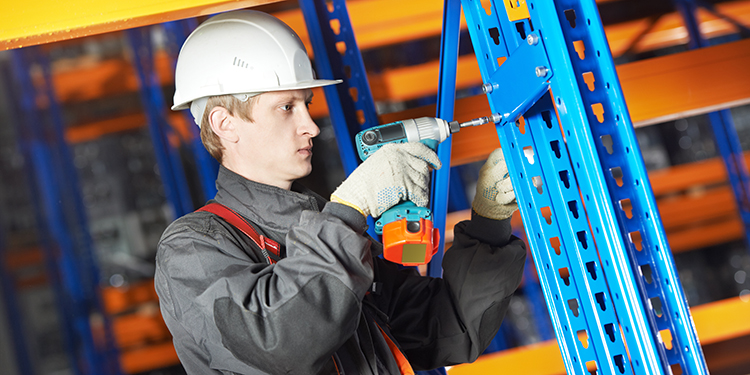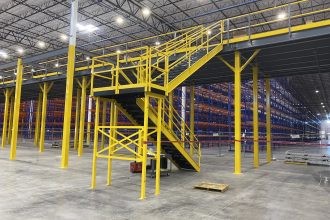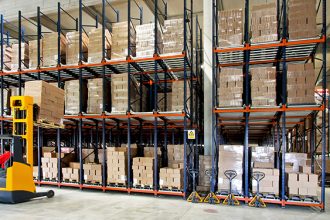Why A Bolted Repair Of Damaged Pallet Rack May Be A Safer Option Than A Field Welded Repair

When damage to an industrial steel pallet rack system column or frame has been discovered, RMI’s publication “Guideline for the Assessment and Repair or Replacement of Damaged Rack – Version 2” suggests multiple options for repairing the damage. Among the repair choices available to rack owners and operators are to work with the original rack equipment manufacturer (OEM) to obtain a bolted upright frame repair kit, or to perform a welded field repair.
Repair kits, developed and offered by most RMI member companies, allow damaged sections of rack to be removed and replaced with a like-new product that is bolted in place. By working with the original rack manufacturer and a qualified engineer, the rack owner can be confident that the repair work will be fully compatible with the current system and continue to create a safe working environment.
A bolted repair can eliminate the risks and complexities associated with a welded repair, which may seem to be the fastest and most economical approach to correcting the damage. In instances where OEM-provided replacement or repair kits are not an option, field welding may be the only available solution — short of replacing the system. Field welding performed by an on-site maintenance technician can be a risky repair technique that may result in an unsafe rack system if the work is not completed correctly or without adhering to several safety practices in order to mitigate those risks.
As outlined in Annex A of RMI’s publication “Guideline for the Assessment and Repair or Replacement of Damaged Rack – Version 2” field welding risks include:
- Fire. Because welding throws sparks into the surrounding area, they could ignite a fire that results in catastrophic building and product damage, particularly if flammable materials are located nearby. Prior to making any repair to damaged racking, a qualified, professional engineer should be engaged to supervise and direct the assessment, design and installation of the remediation process. Should the engineer determine that field welding is the only way to ensure the repaired section is in alignment with the RMI’s ANSI MH16.1: Specification for the Design, Testing and Utilization of Industrial Steel Storage Racks, the welder must comply with all recommended fire and safety procedures, including those outlined by OSHA standard 29 CFR 1910.252(a).
- Weld Contamination. When racks are manufactured, all welding is performed in a controlled environment prior to painting to ensure the resulting welds meet engineered design requirements. Per the American Welding Society Specification – D1.1/D1.1M [3]; Section 8.5.1 Base-Metal Condition, surfaces to be welded must be thoroughly cleaned prior to performing the work. Any paint on the rack component’s surface should be removed to expose bare metal before welding occurs. It can be difficult to properly and thoroughly clean a welded joint in the field, increasing the risk of a contaminated and weakened weld, that may fail when the repaired rack structure is returned to service.
- Operating Temperature. Special consideration should be given to the environment in which a field welding rack repair is performed in order to ensure both the success and strength of the weld. In cold or frozen environments, for example, special low-temperature welding techniques must be used to ensure a safe repair.
- Welder Certification. A welder’s certification is site specific, rather than universal, and likely may not apply to the types of welds needed for a specific field repair. That is, in order to earn a certification in a specific welding technique, the welder must first complete specialized training to perform that type of weld, then demonstrate those unique skills to earn the associated designation. Therefore, do not assume that a field welder is capable of producing the appropriate type of weld required to successfully complete a safe rack repair. The supervising repair engineer should first review and approve the individual’s welding certification documentation prior to allowing him or her to perform the work.
Want to learn more about rack repair? Download RMI’s Guideline for the Assessment and Repair or Replacement of Damaged Rack – Version 2.


